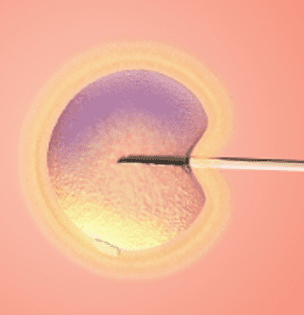Finding when you’re most likely to conceive and become pregnant starts with understanding your menstrual cycle. You’re most likely to get pregnant in the 5 days leading up to and the 24 hours after you ovulate, which typically happens around mid-cycle.
Do you know how long your cycles are? The average is 28 days, with the first day of bleeding counted as day 1:
• Between days 1 and 7 your body prepares to release an egg from your ovaries
• By day 11, your uterine lining begins to thicken to host a fertilized egg, should that happen
• Around day 14, your body releases an egg from your ovaries and down the fallopian tubes where it can meet up with sperm if intercourse has occurred in the last few days
If a sperm unites with an egg to fertilize it, it can then implant in the uterus, and voila! You’re pregnant. If fertilization doesn’t happen, your hormones change and around day 25 your body begins to shed your uterine lining, which results in it bleeding out around day 28.
Discover When You Ovulate
Learning when you ovulate is essential to increasing your odds of conceiving. Use one or several of these methods—for many of which you can find an app to help with tracking—through a few cycles to sleuth out your pattern:
Basal Body Temperature
Your body temperature will rise slightly on the day you ovulate. Take your ‘resting’ temperature each morning at the exact same time before you rise from bed and chart it. Use a digital body basal thermometer since the shift can sometimes be in 10th’s of a degree. You’re most likely to conceive in the 2 to 3 days before and for 24 hours after the temperature shift.
Calendar
If your periods are fairly similar in length and you know your average cycle length, say 29 days for example, you can count back 12-16 days from when you expect your next period and have your targeted timeframe for ovulation.
Ovulation Predictor Kit
These kits scan for an increase in luteinizing hormone (LH) in your urine to predict ovulation, typically 24 to 36 hours in advance.
Fertility Monitor
These hand-held devices help predict ovulation and signal when it has occurred by analyzing hormones in your urine via test stick, your basal body temperature readings and your cycle lengths.
Cervical Mucus
Your body will actually give you specific signs it’s about to ovulate. The mucus from your cervix will change from a creamy consistency to a clear, stretchy consistency like raw egg whites.
Saliva
Like cervical mucus, your saliva may form a pattern that looks like ferns under a handheld scope as you near ovulation. Ferning patterns made of up dots and circles emerge due to estrogen surges prior to ovulation. But some women may never ‘fern’ or do so inconsistently apart from ovulation, say experts at the FDA.






Comments are closed.